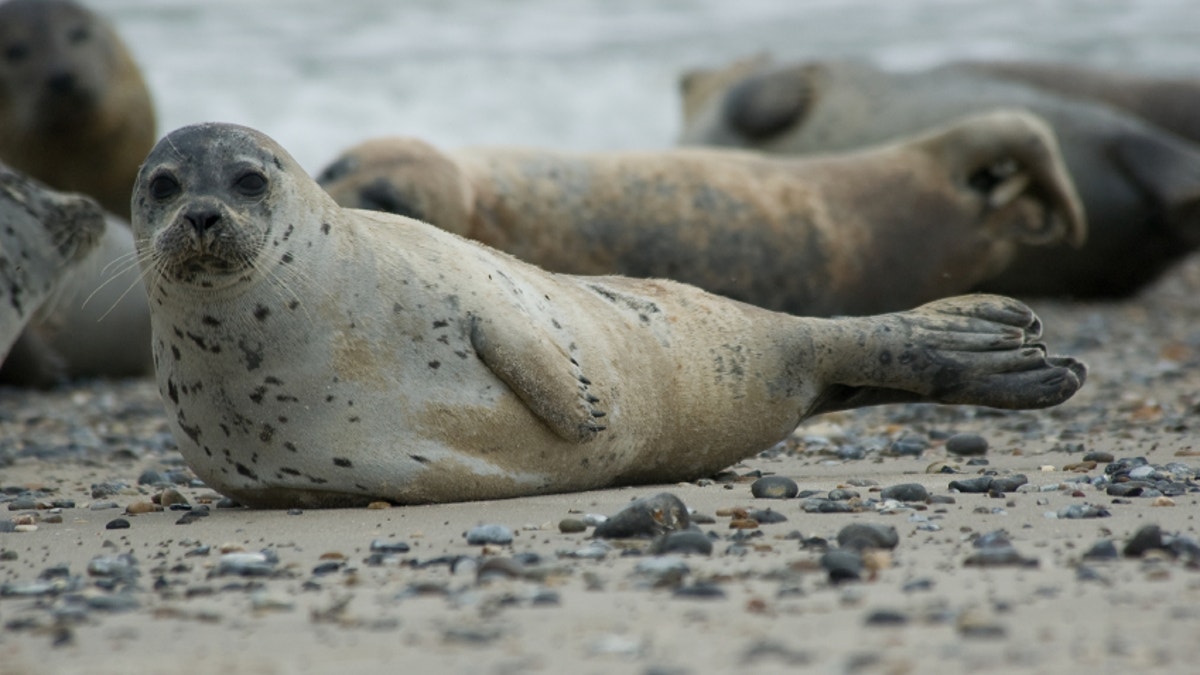
A rebounding seal population has brought sharks to the shores of New England, say experts.
Given the potential for dangerous pandemics to arise from new flu strains, scientists are ever vigilant when it comes to evolving variations of influenza that could pose risks to human health. And now, the emergence of a new adaptation of a type of avian flu has scientists on their guard.
A study published in mBio®, an online journal of the American Society for Microbiology, details the discovery of a novel influenza strain found in New England harbor seals. The virus, which originated in birds, has adapted to infect mammals – making researchers uneasy of the possibility that it could eventually spread to humans.
“Clearly, flu is very high in the list of risk factors for pandemic,” the report’s lead author Dr. Ian Lipkin, John Snow Professor of Epidemiology at Columbia University and the director of the Center for Infection and Immunity, told FoxNews.com. “We lose 40,000 people [per year]to influenza in the U.S. alone. The next big [strain] could be a huge problem.”
The research is the result of a collaborative effort from various institutions, including Columbia University and the National Oceanic and Atmospheric Administration Outbreaks. Upon analyzing the DNA of a virus, which was associated with the deaths of 162 harbors seals that had died in New England in 2011, Lipkin and his team found that five of the seals had died from a particular strain of influenza known as H3N8.
“We weren’t specifically looking for flu,” Lipkin said. “We were trying to solve a problem – why were we suddenly losing all these cute baby seals? We try to do work on animals we think are important, and in this case it was seals. At first we were surprised to find these animals had pneumonia. We then used methods that have been developed to identify disease and found they had this flu.”
H3N8 is closely related to a type of flu that has been affecting North American birds since 2002. However, a key difference is that H3N8 has developed the capacity to affect mammals as well. According to Lipkin, this adaptation is an important jump for the virus, and it may be a weigh station for the strain on its way to spreading to humans.
To add to the researcher’s concern, this particular virus is capable of targeting a receptor in the human respiratory tract called SAa-2,6.
“Viruses are basically intracellular parasites,” Lipkin said. “They need to find something that allows them to get into cells, find something they can subvert so they can reproduce. These receptors sit outside cells, and allow viruses to get into. There are two types of receptors – ones found in birds and ones found in mammals. This particular virus has the ability to attach to both mammalian receptors and bird receptors. It’s devious.”
'Worst-case scenario'
According to Lipkin, birds are a major reservoir for flu. As they migrate from northern to southern climates (and visa versa), birds carry flu strains across the country, eventually spreading them to pigs since they have both bird receptors and mammalian receptors for flu. Once the flu adapts, this characteristic allows pigs to then transmit the flu to humans – what was experienced in 2009 when the H1N1 “swine flu” emerged in humans.
Interestingly, the new report highlights the similarities between seals and pigs as flu transmitters, meaning scientists might pay more attention to seals in the future.
“We found in seals you have both bird receptors and mammalian receptors,” Lipkin said. “They're almost like aquatic pigs. We need to think very closely about monitoring seals, because they could be harbingers for what’s to come. People haven’t focused on that.”
Now that H3N8 has been discovered, Lipkin and others plan to monitor its evolution very closely in order to gauge how big of a threat it can become.
“The first thing to do is…see if it’s moving into animals that are terrestrial,” Lipkin said. “Is it moving from seals to pigs? We have so many pigs in U.S. and Mexico that this virus can move to pigs and adapt to humans. Nobody knows what the next big flu pathogen will look like. This is the virus that could make that jump.”
“The other issue is simply to see if this virus continues to evolve,” Lipkin added. “We’ve identified all the mutations in this virus we think are important…in helping this virus evolve.”
In terms of determining the likelihood of this virus becoming the next flu pandemic, Lipkin said there is no way to know for sure. But he said it’s the job of the Center for Infection and Immunity to be prepared.
“Any time you become concerned of the emergence of a new influenza,” Lipkin said, “you have to think of the worst-case scenario.”
